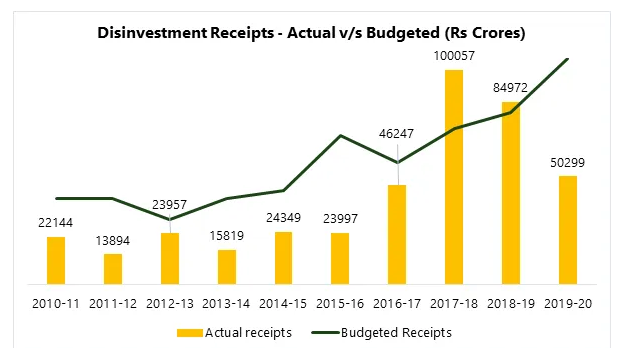Free Courses Sale ends Soon, Get It Now


Free Courses Sale ends Soon, Get It Now



Disclaimer: Copyright infringement not intended.
Context
Disinvestment
Main objectives of Disinvestment in India:
Importance of Disinvestment
The importance of disinvestment lies in utilisation of funds for:
What is the disinvestment policy followed in India?
Disinvestment of a minority stake in a Government-owned entity is done in one of the following ways:
|
Point of Difference |
Strategic Disinvestment |
Privatization |
|
Control |
Dilution of ownership, Government retains control |
Transfer of ownership, control changes hands |
|
Shareholding threshold |
More than 50 percent |
Less than 50 percent |
|
Purpose |
To ease public finances and increase productivity of Government capital |
Strategic in terms of achieving operational efficiency |
Disinvestments in India

The government has set its disinvestment target for next fiscal i.e 2023 at Rs 65,000 crore.
https://epaper.thehindu.com/Home/ShareArticle?OrgId=GR29PTJE0.1&imageview=0
© 2024 iasgyan. All right reserved